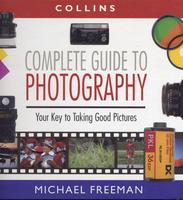
The book is generic – it does not focus on the either film or digital photography. It talks about photography in general, prodiving examples for both worlds. The language is very clear. The terminology is kept to the minimum. Sentences are short. Parts of the book are broken into chapters, which are, in turn, broken into sections. Sections are very small units – few sentences or paragraphs long. Very easy to consume. There are plenty of pictures to illustrate the text.
Something I found surprising about this book. Although sentences were short and sections small, the book was so informative and thought provoking that I had to stop reading a lot of times just to consume what I’ve just read. While reading it I had always the urge to go back and reread sections, because I had a feeling that I left something important out. Immidiately after I have finished reading the book, I wanted to start all over again. And I will. Just not right now.
Another helpful side of the book are projects. Alsmost every chapter contains a project that you can do on your own to see and compare what you get with what is promised by the book. Some projects are interesting even without academia on the background.
This book is worth a buy. It will easily become a most used book of a photography beginner like myself. Unfortunately though I couldn’t find this particular book anywhere in the web shops. The copy I have is from a friend, who borrowed it from the library. I even head to scan the cover of it, although it didn’t fit into the scanner completely. On the web, I see only “The Complete Guide to Digital Photography” by Michael Freeman, which probably a newer and revised edition.
